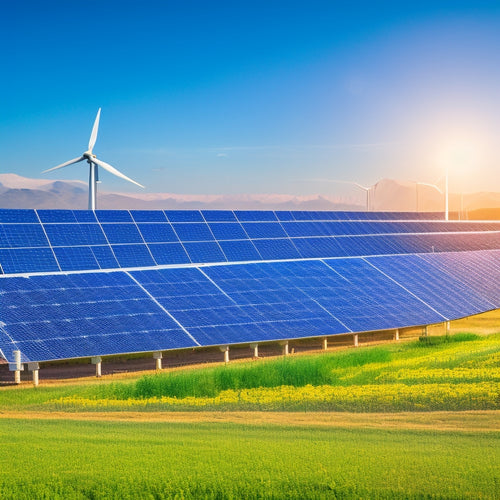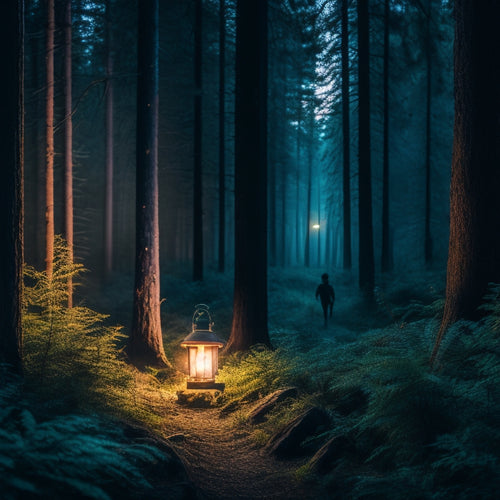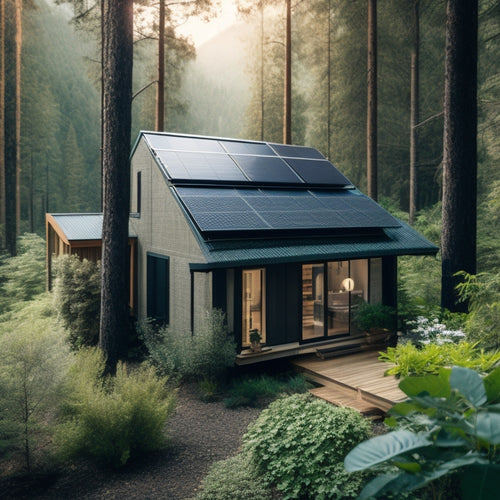
Essential Water Purification Methods for Campers
Share
When camping, ensuring access to clean water is crucial for your health. You can use methods like boiling to kill harmful microorganisms, chemical treatments with tablets, or portable filtration systems for convenience. UV sterilization is quick, with purification taking about a minute. Choose your water source wisely—clear, flowing river water is best, while lake water should be far from human activity. Consider eco-friendly options like solar purification to minimize your environmental impact. Mastering these essential purification techniques will keep you hydrated and healthy in the wild, and there's plenty more you can uncover to enhance your outdoor experience.
At a Glance
- Boiling water effectively kills harmful microorganisms; maintain a rolling boil for at least one minute for safe drinking water.
- Chemical treatments, like purification tablets or unscented bleach, provide convenient alternatives for ensuring clean water; follow dosage instructions carefully.
- Filtration systems, including gravity filters, remove bacteria and protozoa, making them ideal for purifying river and lake water.
- UV sterilization quickly eliminates pathogens in about 60 seconds, requiring minimal setup for effective water purification.
- Solar purification harnesses the sun's energy for eco-friendly water distillation, offering a sustainable method for camping hydration.
Convenience in Remote Locations
When you're out in the wilderness, having portable purification solutions at your fingertips can make all the difference.
You'll want techniques that allow for easy access to clean water without the hassle.
Let's investigate some practical methods that keep your hydration hassle-free, even in the most remote locations.
Portable Purification Solutions
Exploring the great outdoors can be thrilling, but accessing clean water in remote locations often poses a challenge. Fortunately, portable purification solutions can help you stay hydrated without sacrificing your journeys. Whether you're hiking, camping, or exploring, having the right tools at your disposal is essential.
Here's a quick overview of some popular portable purification options:
| Method | Description | Pros |
|---|---|---|
| Solar Purification | Uses sunlight to purify water in bags | Eco-friendly, no energy needed |
| Filtration Systems | Handheld filters remove bacteria and protozoa | Lightweight, fast, and effective |
| Chemical Treatments | Tablets or drops to disinfect water | Compact, easy to use |
| UV Purifiers | Uses UV light to kill pathogens | Quick, battery-powered |
These solutions enable you to welcome your freedom in nature without the fear of dehydration or illness. By utilizing solar purification or filtration systems, you can enjoy clean water wherever your journeys take you. Remember, staying hydrated is key to fully experiencing the beauty of the wilderness!
Easy Access Techniques
Accessing clean water in remote locations doesn't have to be a hassle. With the right techniques, you can easily purify water on your excursions.
One of the most convenient methods is using gravity filters. These systems allow you to set up your filtration process without needing to pump or exert much effort. Just fill the upper reservoir with water, hang it from a tree or a post, and let gravity do the work. Within minutes, you'll have purified water ready to drink.
Another effective method is UV sterilization. Compact and lightweight, UV sterilizers use ultraviolet light to kill pathogens in your water. Simply fill a container, immerse the UV device, and in about 60 seconds, you'll have safe drinking water. This method is perfect for those who want to travel light without sacrificing safety.
Both gravity filters and UV sterilization offer convenience and efficiency, ensuring you stay hydrated without the stress of complicated setups.
Adopt these easy access techniques, and enjoy the freedom of exploring the great outdoors with peace of mind!
Healthier Drinking Water
When you're out camping, having access to clean drinking water is essential for your health.
Contaminants like bacteria, viruses, and chemicals can lurk in natural water sources, putting you at risk.
Utilizing effective solar water purifiers can greatly enhance your safety by removing harmful pathogens.
Understanding the importance of purification methods can help you stay safe and hydrated during your excursions.
Importance of Clean Water
Clean water is crucial for your health, especially when you're out in the wilderness. It's easy to overlook, but neglecting the significance of clean water can lead to serious health risks.
When you're hiking or camping, your body loses fluids, making proper hydration essential. Drinking contaminated water can introduce harmful pathogens, leading to illnesses that can ruin your journey.
To keep yourself healthy, implement effective hydration strategies. Always prioritize sourcing clean water, whether it's from streams, lakes, or springs. Invest in a reliable purification method, like a water filter or purification tablets, to eliminate potential contaminants.
Remember, staying hydrated not only helps maintain your energy levels but also supports your immune system, keeping you strong against any outdoor challenges.
When you take the time to confirm your water is clean, you're not just quenching your thirst; you're safeguarding your health. So, make it a habit to assess your water sources and purify accordingly.
Welcome the freedom of the outdoors, but do so with the knowledge that clean water is a non-negotiable part of your journey. Stay safe, stay hydrated, and enjoy every moment of your wilderness experience!
Common Contaminants to Avoid
Numerous contaminants lurk in natural water sources, posing serious health risks for campers. As you explore the wild, it's essential to be aware of the dangers that come with drinking untreated water. Bacterial pathogens, like E. coli, can cause severe gastrointestinal issues, while viral contaminants may lead to more serious diseases.
You should also be cautious of chemical pollutants from nearby agricultural runoff, which can introduce harmful pesticides and fertilizers into the water. Heavy metals, often resulting from industrial waste, can accumulate in your body and cause long-term health problems if ingested.
Sediment particles can harbor bacteria and viruses, making even clear-looking water unsafe. Recreational hazards, such as sewage discharge from nearby campsites or towns, can further compromise water quality.
To enjoy the freedom of nature without the risk of contamination, always purify your water before drinking. Understanding these common contaminants enables you to make safer choices, ensuring your excursions remain enjoyable and healthy.
Stay vigilant, and always prioritize clean water in your outdoor experiences!
Key Purification Technologies Discussed
When you're out in the wild, knowing how to effectively purify your water is essential.
Two popular methods are boiling, which can kill most pathogens, and chemical treatments, which offer a convenient alternative when boiling isn't possible.
Additionally, just as farms benefit from energy storage systems to guarantee safe and reliable energy, campers can also implement effective water purification strategies to guarantee safe drinking water.
Let's investigate how these technologies work and their effectiveness in guaranteeing safe drinking water.
Boiling Water Effectiveness
Boiling water stands out as one of the most effective methods for purifying drinking water while camping. The process is simple, yet it packs a powerful punch against harmful microorganisms. When you bring water to a rolling boil, you're raising its temperature considerably—typically above 100 degrees Celsius. This heat kills bacteria, viruses, and parasites that can cause illness.
To guarantee maximum effectiveness, it's essential to pay attention to boiling duration. You should keep the water boiling for at least one minute, or three minutes at higher altitudes where the boiling point is lower. This small investment of time can make a huge difference in your overall health.
Another important aspect is temperature control. Using a camp stove or a fire, you'll want to maintain a consistent boil without letting the flames die down.
Once your water is boiled and cooled down, you can confidently hydrate without the worry of contaminants.
Chemical Treatment Options
Chemical treatment options offer a dependable way to purify water while you're out in the wild. If you're looking for convenience and effectiveness, purification tablets are a great choice. These compact, lightweight tablets typically contain chlorine dioxide or iodine, both of which can kill bacteria and viruses that might lurk in your water source.
When using these tablets, it's essential to follow the instructions carefully, especially regarding chemical dosages. Each tablet is designed for a specific volume of water, so using too few could leave harmful microorganisms behind. Generally, you'll want to let the water sit for at least 30 minutes after adding the tablet to guarantee proper purification.
Another handy option is liquid chlorine bleach, which can be effective if you don't have tablets on hand. Just remember, it's important to use the unscented variety and measure your dosages correctly—typically, about 2 drops for every liter of water, letting it sit for at least 30 minutes.
Embracing these chemical treatment options means you can confidently hydrate, knowing you've taken the right steps to confirm your water is safe, allowing you to enjoy your outdoor excursions without worry.
Selecting Based on Water Source
When you're out camping, the source of your water can greatly impact your purification needs.
River water often carries sediment and potential contaminants, while lake water may harbor algae and other pollutants. Understanding these differences helps you choose the right purification method for safe drinking water.
Utilizing solar-powered purifiers can enhance your ability to access clean water, particularly in remote areas where traditional methods may be less effective.
Additionally, knowing the specific contaminants associated with your water source can guide you in selecting the most appropriate filtration technology.
River Water Considerations
Choosing the right river water source can make a significant difference in your camping experience. Not all river water is created equal, so it's essential to assess the source before you fill up your water bottles.
Look for clear, flowing water rather than stagnant pools, as moving water is less likely to harbor harmful bacteria and parasites.
When considering river water safety, steer clear of areas near industrial sites, livestock, or heavy foot traffic. These factors can introduce pollutants that may compromise your health.
It's also wise to check for signs of wildlife activity—animal tracks or droppings can indicate potential contamination.
Once you've identified a suitable source, prioritize river water filtration. Use a reliable water filter designed for treating river water, or consider boiling your water to guarantee it's safe to drink.
Lake Water Assessment
Often overlooked, lake water can be a revitalizing source for campers, but evaluating its quality is essential before you take a sip. Start by observing the surroundings. Clear, calm water often indicates better water quality, while murky or discolored water can signal pollution or stagnation.
Pay attention to the aquatic life; a thriving ecosystem with fish and plants usually suggests a healthier environment. However, beware of areas with excessive algae growth, as this can indicate contamination.
Next, consider the proximity of human activity. If you're near campsites, boat launches, or agricultural runoff, the water mightn't be safe to drink. Always choose a spot far from these disturbances.
It's also wise to check for signs of wildlife, such as animal tracks or droppings, which could contaminate the water.
Lower Environmental Impact
When you're out camping, choosing eco-friendly purification techniques can make a big difference for the environment.
Methods like solar water disinfection or using biodegradable filters not only keep your water safe but also minimize your impact on nature.
Eco-Friendly Purification Techniques
For campers seeking to minimize their environmental footprint, eco-friendly water purification techniques offer practical solutions without compromising safety.
One of the simplest methods you can use is natural filtration. By using sand, charcoal, and gravel, you can create a makeshift filter that removes impurities from your water. Just layer these materials in a container, pour in the water, and let gravity do the work.
Another effective technique is solar distillation. You can utilize the sun's energy to purify water by creating a solar still. Dig a shallow pit, place a container at the bottom, and cover the pit with clear plastic.
As the sun heats the water, it evaporates and condenses on the plastic, dripping into the container as pure water. This method not only conserves resources but also allows you to enjoy the outdoors without the need for chemicals or fuel.
Frequently Asked Questions
How Do I Know if My Water Source Is Contaminated?
To determine if your water source is contaminated, look for water contamination signs like unusual color or odor. You can use simple testing methods, such as kits or strips, to check for harmful substances effectively.
Can I Purify Water From a Lake or River?
You can definitely purify lake water or river water! With proper techniques like boiling, filtering, or using chemical tablets, you'll convert potentially polluted puddles into pure, potable perfection. Enjoy your journeys without worry!
What Are the Costs of Different Purification Methods?
When you look at purification methods, consider the cost comparison. Filters might seem pricier upfront, but tablets are budget-friendly. Weigh your options based on your needs and how often you'll be using them.
How Often Should I Replace Filters in Purification Devices?
You should replace filters based on their lifespan, usually every few months. Regular maintenance tips include checking for clogs and cleaning components. Keeping up with this guarantees reliable purification and gives you the freedom to investigate worry-free.
Are There Portable Purification Options for Emergency Situations?
Absolutely, you've got several portable purification options for emergencies. Consider adding filter types like activated carbon or UV purifiers to your emergency kits. They're lightweight, effective, and can give you peace of mind anytime, anywhere.
Explore More
To summarize, don't let concerns about water safety hold you back from enjoying the great outdoors. By using essential purification methods like filters, UV light, or chemical treatments, you can guarantee access to healthy drinking water, no matter where you are. Plus, these methods are designed to be convenient and environmentally friendly, allowing you to focus on your journey instead of worrying about hydration. So gear up, stay safe, and make the most of your camping experience!
Related Posts
-

The Role of Battery Monitoring Systems in Renewable Energy
Battery monitoring systems play an essential role in renewable energy by enhancing system longevity and optimizing pe...
-

Essential Hiking Lights for Safety and Fun
When you're hitting the trails, essential hiking lights are vital for safety and fun. A lightweight headlamp offers h...
-

Off Grid Solar Batteries
As you shift to off-grid living, you'll rely on high-performance solar batteries to store excess energy generated by ...


